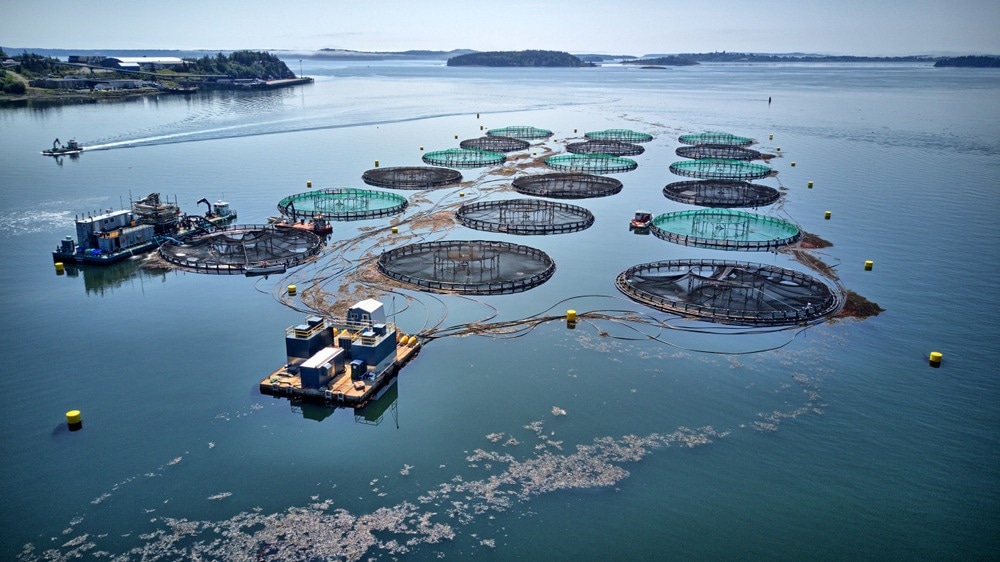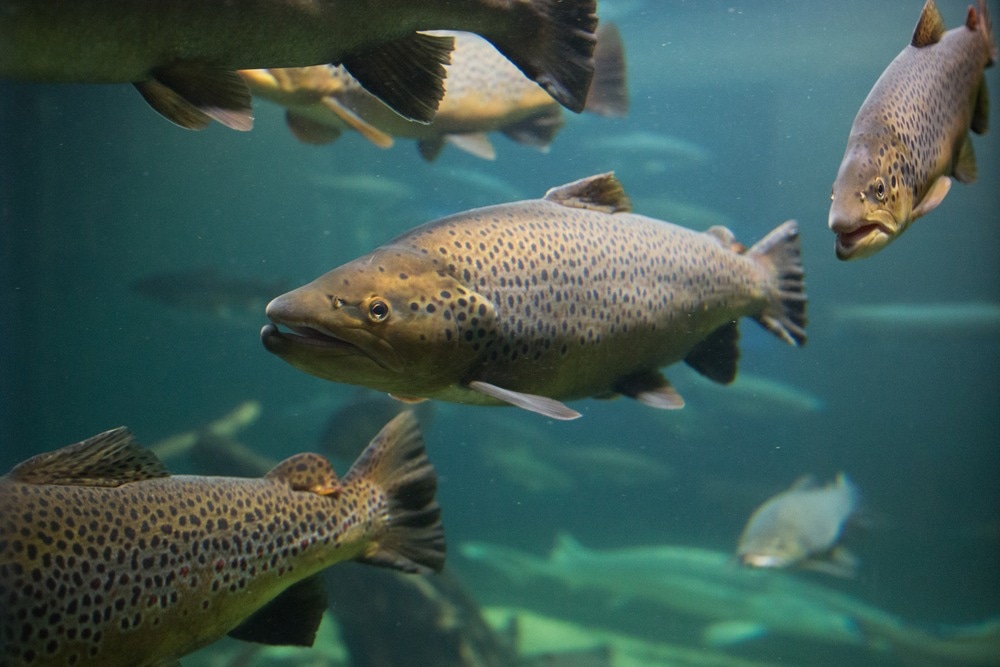Although human activities such as aquaculture typically aim at exploiting ocean resources, emerging strategies are also hoping to restore key species and ecological functions to degraded habitats. As a result, aquaculture may provide a key foundation for reintroducing native species, restoring critical functions, and improving ecosystem services.

Image Credit: leo w kowal/Shutterstock.com
The importance of ocean ecosystems
From global climate change to agricultural runoff and plastic pollution, human activities significantly impact ocean ecosystems and the species they encompass. The consequences of human activity have also been documented across all ocean systems, from coastal to aquatic systems and from the arctic waters to the deepest points in the Marianna trench. As a result, the current era is characterized by extensive human impacts, hence termed the Anthropocene.
Oceans are critical to global water and nutrient cycles; they also act as carbon and heat storage to cool the planet and regulate atmospheric gas concentrations, respectively. Phytoplankton also produces most of the oxygen on earth, and the highest levels of biodiversity are arguably found among coastal coral reefs. Such fundamental sources of life demonstrate the global role of oceans for marine and freshwater systems and terrestrial ecosystems.
Therefore, the deregulation of ocean functions and the overexploitation of its resources is of global concern. The impacts of human activity on ocean functioning are already being observed worldwide. This includes the weakening of the Gulf Stream and the South Asian Monsoon, as well as the absence of key wind currents over India, causing a lasting heatwave reaching over 50 ͦC during April 2022.
As a result of the implications associated with deregulating ocean ecosystems, policymakers hope to adapt to or mitigate the effects of climate change using restoration strategies. These strategies are part of a larger consortium advocating for better conservation measures while considering the needs of the human population, including the rising demand for food. This parallel strategy has focused on sustainable food production methods in agriculture and aquaculture.
Specifically, aquaculture has become a promising candidate as it provides a system to simultaneously produce food and help species, which may be of ecological value, to grow, reproduce, and spread. In turn, this may improve the recovery capacity of susceptible species or ecosystems that have experienced habitat degradation.
Understanding the potential for aquaculture to restore ocean ecosystems
Aquaculture's primary focus is on food production, but in recent years aquaculture has been increasingly used as a tool for ecosystem restoration. A 2019 study by Patterson highlights the mechanisms aquaculture harnesses to promote conservation strategies. Specifically, the practice of 'gardening' or artificial propagation has emerged to restore susceptible ecosystems or species.
The practice of culturing aquatic organisms focuses on species that serve key ecological functions or promote biodiversity by altering the seascape, so-called ecosystem engineering species. This includes bivalves readily available to culture and create calcified biogenic reefs that harbor diverse organisms. In turn, increasing species richness and diversity will help restore ecosystem functions.
Aquaculture restoration typically occurs at the interface of private agriculture and public natural resources, as it increases opportunities for private aquaculture producers while improving ecosystem services for the community. The interconnectedness of restoration aquaculture was further discussed in a 2021 study by Giangrande et al. 2021. The study uses different maricultural methods to discuss the possibilities and innovations related to sustainable aquaculture in the Mediterranean area.
The paper presents the role of Integrated Multi-Trophic Aquaculture (IMTA) and how this perspective supports the sustainable exploitation of the ocean's resources. Specifically, IMTA focuses on controlled gardens, offshore mussel farms, and artificial reefs to promote biodiversity while allowing organisms to be harvested sustainably. The promising aspect of IMTA is also the possibility of implementing facilities in eutrophic coastal areas, which may accelerate the growth of bivalves. However, the potential for applied IMTA remains unclear, particularly on broader spatial scales.

Image Credit: Aristokrates/Shutterstock.com
Implications and limitations to the restoration capacity for aquaculture
In recent years, aquaculture has played key roles in the restoration of certain ecosystems by cultivating ecosystem engineering species, yet issues related to spatiotemporal scales persist. This was the case for the European flat oyster (Ostrea edulis), which provides ecosystem services such as cleaner water, higher biodiversity, and better nutrient cycling while providing a source of aquacultural production.
The restoration of the European flat oyster was further discussed in a 2021 study by Colsoul et al. This species has been the focus of ecological restoration efforts in Europe for several decades and is at the center of projects run by governmental and non-governmental organizations for its aquaculture, restocking restoration, or reintroduction in its former range all over European coasts. However, the current supply of seedlings required for the successful restoration of this species is insufficient due to the lack of disease-tolerant seedlings.
Oyster restoration is typically either done by releasing larvae into the wild, producing older oysters then releasing them, or translocating adult oysters. With the shortage of healthy larvae, current restoration efforts are limited to rearing older oysters. This is of concern as it may not result in widespread restoration as hoped for by broader policies.
Although the flat oyster has become a focal point of restoration efforts, considering species-specific issues is critical to establishing successful restoration plans. Ultimately, aquaculture may enable successful restoration efforts only if sustainable production objectives are defined since both exploitation and conservation represent opposing strategies. However, if our understanding of ecosystem and species functioning improves alongside fisheries production, restoration through aquaculture may represent a viable solution to improve conservation.
Sources:
- Boudouresque, C. F., Blanfuné, A., Pergent, et al. (2020). Impacts of Marine and Lagoon Aquaculture on Macrophytes in Mediterranean Benthic Ecosystems. Frontiers in Marine Science, 7. https://doi.org/10.3389/fmars.2020.00218
- Colsoul, B., Boudry, P., Pérez‐Parallé, M. L., et al. (2021). Sustainable large‐scale production of European flat oyster (Ostrea edulis) seed for ecological restoration and aquaculture: a review. Reviews in Aquaculture, 13(3), 1423–1468. https://doi.org/10.1111/raq.12529
- Giangrande, A., Gravina, M. F., Rossi, S., Longo, C., & Pierri, C. (2021). Aquaculture and Restoration: Perspectives from Mediterranean Sea Experiences. Water, 13(7), 991. https://doi.org/10.3390/w13070991
- Patterson, J. T. (2019). The growing role of aquaculture in ecosystem restoration. Restoration Ecology, 27(5), 938–941. https://doi.org/10.1111/rec.13002
Further Reading
Last Updated: May 18, 2023